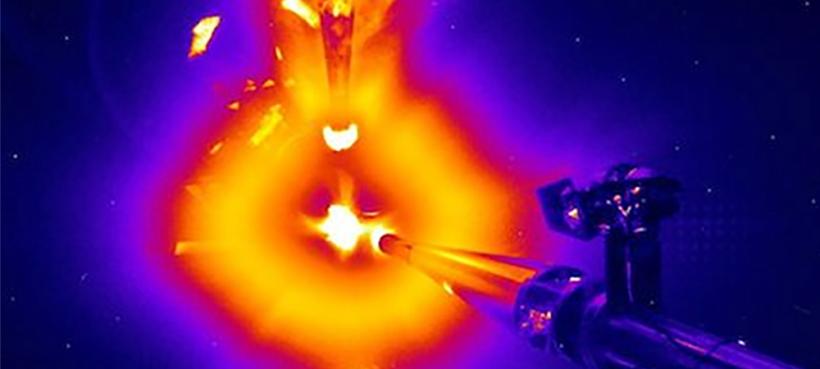
High-Energy-Density Physics (HEDP) is the study of matter under extreme states of pressure (~ 1 Mbar to 1000 Gbar, or one million to one trillion times the atmospheric pressure at Earth’s surface). Examples of places where these conditions occur are the Earth’s core, the Sun’s core, and igniting Inertial-Confinement-Fusion (ICF) implosions (~250 Gbar). At these pressures matter behaves very differently than at Earth-like pressures, displaying rich physics. The study of this type of physics is important in understanding how stars form, how elements are made, and how to harness fusion energy on Earth using ICF.
The PSFC’s HEDP Division researches a wide range of topics by exploiting the extreme physical conditions achievable through the use of large off-site facilities specially designed for research in HEDP and in ICF. Laser energy is used to compress capsules filled with fuel material to high density and pressure in order to generate fusion reactions with the goal of self-sustained fusion burn (“ignition”) and the generation of energy. The work is primarily executed using the 30‑KiloJoule OMEGA laser at the University of Rochester and the 2‑MegaJoule laser at the National Ignition Facility (NIF). PSFC researchers work with collaborators in developing special diagnostic instrumentation that makes it possible to study spatial and temporal variations in plasma properties and electromagnetic fields through spectral, temporal, and imaging measurements. The researchers actively participate in planning experiments at the facilities and in analyzing the results. Major research topics include:
In addition to working at the large facilities, PSFC scientists and students utilize an in-house accelerator facility, designed and built largely by students, to test and calibrate new plasma diagnostic instruments that will be used at OMEGA and at the NIF.
In 2019 the HEDP division, along with four other universities, was awarded a five-year, $10 million grant to establish a Stewardship Science Academic Alliances Center of Excellence. The PSFC is the lead partner in the center, which includes the University of Iowa; the University of Nevada at Reno; the University of Rochester; and Virginia Polytechnic Institute and State University.
Browse published and submitted papers HERE.
Dr. Johan Frenje
jfrenje@psfc.mit.edu